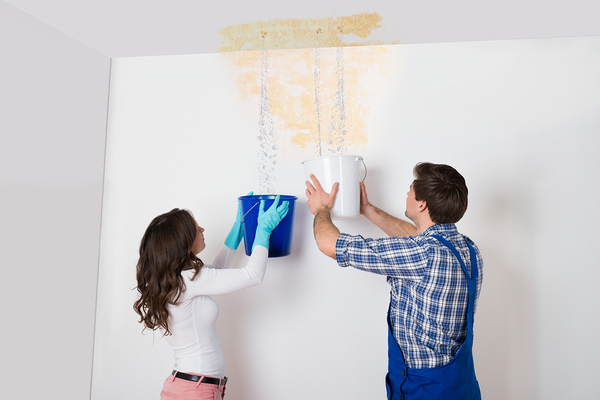Learn About Common Factors Triggering Water Leak Issues in Your Residence
Learn About Common Factors Triggering Water Leak Issues in Your Residence
Blog Article
What're your thoughts and feelings on How to detect water leaks in your home?

Leaks not only trigger waste of water but can also trigger unneeded damage to your home and advertise undesirable organic growth. By looking and also understanding for day-to-day circumstances that cause leaks, you can safeguard your house from future leakages as well as unneeded damage.
Trespassing origins
A lot of water leakages begin outside your home rather than inside it. If you see an unexpected decrease in water pressure, claim in your tap, require time to head out as well as examine your lawn. You could discover damp patches or sinkholes in your backyard, and that may suggest that tree origins are invading water lines creating water to permeate out. You can have your plumber look for intrusion, especially if you have trees or bushes near your residential or commercial property.
Rusty water supply
As time goes by, your plumbing system ages and rust such as corrosion might begin eating away the pipes. This may be the source of discoloration or bending on your pipes. This asks for an examination with your plumber instantly. Think about changing the pipelines since they are at a greater danger of rust than the newer designs if our plumbing system is old.
Defective Pipeline Joints
The factor at which your pipelines link is frequently the weakest link in the waterline. Pipeline joints can weaken over time, causing water leakages. The majority of pipe joints are not easily visible. If you have noisy pipes that make ticking or banging noises, specifically when the warm water is activated, your pipe joints are most likely under a lot of pressure. It is recommended to have your plumber evaluate your system once a year.
Instantaneous temperature modifications.
Extreme temperature modifications in our pipes can trigger them to increase and get unexpectedly. This growth and contraction might create cracks in the pipelines, specifically if the temperature level are below freezing. If you kept an eye on exactly how your plumbing works, it would be best. The presence of the formerly discussed conditions regularly suggests a high risk.
Poor Water Connectors
Sometimes, a leakage can be caused by loose hose pipes and pipes that provide your devices. Usually, moving is what triggers the loose water Connections. You may find in the case of a cleaning equipment, a pipe may spring a leakage because of drinking throughout the spin cycle. In case of a water links leak, you may discover water running straight from the supply line or puddles around your devices.
Clogged Drains
Blocked drains pipes could be bothersome and also inconveniencing, but they can in some cases wind up creating an overflow bring about burst pipelines. Keep removing any type of materials that might drop your drains pipes that might block them to prevent such aggravations.
All the above are reasons for leakages however not all water leaks result from plumbing leaks; some leakages may come from roofing system leaks. All leakages must be repaired promptly to prevent water damage.
Leakages not just trigger waste of water but can also create unnecessary damages to your home and also advertise unwanted natural growth. By looking as well as recognizing for daily situations that trigger leaks, you can shield your home from future leakages and also unnecessary damages. Today, we will look at 6 leakage causes that might be causing your pipes to drip.
At times, a leakage can be caused by loose pipes and also pipes that supply your appliances. In instance of a water links leak, you may observe water running directly from the supply line or pools around your appliances.
How To Check For Water Leak In Your Home
How To Check for Leaks
The average household's leaks can account for nearly 10,000 gallons of water wasted every year and ten percent of homes have leaks that waste 90 gallons or more per day. Common types of leaks found in the home are worn toilet flappers, dripping faucets, and other leaking valves. These types of leaks are often easy to fix, requiring only a few tools and hardware that can pay for themselves in water savings. Fixing easily corrected household water leaks can save homeowners about 10 percent on their water bills.
To check for leaks in your home, you first need to determine whether you're wasting water and then identify the source of the leak. Here are some tips for finding leaks:
Take a look at your water usage during a colder month, such as January or February. If a family of four exceeds 12,000 gallons per month, there are serious leaks.
Check your water meter before and after a two-hour period when no water is being used. If the meter changes at all, you probably have a leak.
Identify toilet leaks by placing a drop of food coloring in the toilet tank. If any color shows up in the bowl after 10 minutes, you have a leak. (Be sure to flush immediately after the experiment to avoid staining the tank.)
Examine faucet gaskets and pipe fittings for any water on the outside of the pipe to check for surface leaks.
Undetected water leaks can happen without the home or business owner even realizing. If you suspect a water leak, but not able to find the source. It is time to contact a professional water leak detection service, The Leak Doctor.
How To Find a Water Leak In Your Home
https://www.leakdoctor.com/blog/How-To-Check-For-Water-Leak-In-Your-Home_AE197.html

I recently found that blog posting about How Fast Water Damage Can Ruin Your Home when browsing the search engines. Sharing is nice. Helping others is fun. I thank you for reading our article about How Fast Water Damage Can Ruin Your Home.
Quick help? Contact. Report this page